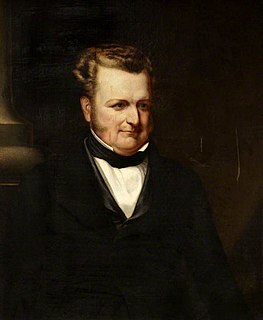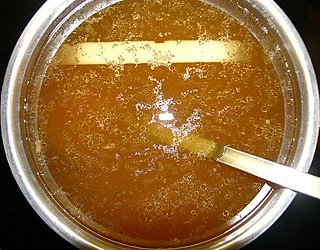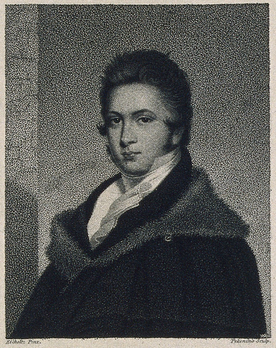Related Research Articles
ʿAbd al-Laṭīf al-Baghdādī, short for Muwaffaq al-Dīn Muḥammad ʿAbd al-Laṭīf ibn Yūsuf al-Baghdādī, was a physician, philosopher, historian, Arabic grammarian and traveller, and one of the most voluminous writers of his time.

A definition is a statement of the meaning of a term. Definitions can be classified into two large categories, intensional definitions and extensional definitions. Another important category of definitions is the class of ostensive definitions, which convey the meaning of a term by pointing out examples. A term may have many different senses and multiple meanings, and thus require multiple definitions.

Hippocrates of Kos, also known as Hippocrates II, was a Greek physician of the classical period who is considered one of the most outstanding figures in the history of medicine. He is traditionally referred to as the "Father of Medicine" in recognition of his lasting contributions to the field, such as the use of prognosis and clinical observation, the systematic categorization of diseases, or the formulation of humoural theory. The Hippocratic school of medicine revolutionized ancient Greek medicine, establishing it as a discipline distinct from other fields with which it had traditionally been associated, thus establishing medicine as a profession.

Sir John Frederick William Herschel, 1st Baronet was an English polymath active as a mathematician, astronomer, chemist, inventor, experimental photographer who invented the blueprint, and did botanical work.

Cardamom, sometimes cardamon or cardamum, is a spice made from the seeds of several plants in the genera Elettaria and Amomum in the family Zingiberaceae. Both genera are native to the Indian subcontinent and Indonesia. They are recognized by their small seed pods: triangular in cross-section and spindle-shaped, with a thin, papery outer shell and small, black seeds; Elettaria pods are light green and smaller, while Amomum pods are larger and dark brown.
An aphorism is a concise, terse, laconic, or memorable expression of a general truth or principle. They are often handed down by tradition from generation to generation. The concept is generally distinct from those of an adage, brocard, chiasmus, epigram, maxim, principle, proverb, and saying; although some of these concepts may be construed as types of aphorism.

John Frederic Daniell FRS was an English chemist and physicist.

Broth, also known as bouillon, is a savory liquid made of water in which meat, fish or vegetables have been simmered for a short period of time. It can be eaten alone, but it is most commonly used to prepare other dishes, such as soups, gravies, and sauces.

Richard Harlan was an American paleontologist, anatomist, and physician. He was the first American to devote significant time and attention to vertebrate paleontology and was one of the most important contributors to the field in the early nineteenth century. His work was noted for its focus on objective descriptions, taxonomy and nomenclature. He was the first American to apply Linnaean names to fossils.

Charles Hutton FRS FRSE LLD was an English mathematician and surveyor. He was professor of mathematics at the Royal Military Academy, Woolwich from 1773 to 1807. He is remembered for his calculation of the density of the earth from Nevil Maskelyne's measurements collected during the Schiehallion experiment.

Jesse Ramsden FRS FRSE was a British mathematician, astronomical and scientific instrument maker. His reputation was built on the engraving and design of dividing engines which allowed high accuracy measurements of angles and lengths in instruments. He produced instruments for astronomy that were especially well known for maritime use where they were needed for the measurement of latitudes and for his surveying instruments which were widely used for cartography and land survey both across the British Empire and outside. An achromatic eyepiece that he invented for telescopes and microscopes continues to be known as the Ramsden eyepiece.

William Henry was an English chemist. He was the son of Thomas Henry and was born in Manchester England. He developed what is known today as Henry's Law.

Hippocrates of Chios was an ancient Greek mathematician, geometer, and astronomer.

The Book of Optics is a seven-volume treatise on optics and other fields of study composed by the medieval Arab scholar Ibn al-Haytham, known in the West as Alhazen or Alhacen.
Delium was a small town in ancient Boeotia with a celebrated temple of Apollo. It was located upon the sea-coast in the territory of Tanagra in Boeotia, and at the distance of about a mile from the territory of Oropus. This temple, which like the town took its name from the island of Delos, is described by Livy as overhanging the sea, and distant 5 miles (8.0 km) from Tanagra, at the spot where the passage to the nearest parts of Euboea is less than 4 miles (6.4 km). Strabo speaks of Delium as a temple of Apollo and a small town (πολίχνιον) of the Tanagraei, distant 40 stadia from Aulis.

William Mudge (1762–1820) was an English artillery officer and surveyor, born in Plymouth, an important figure in the work of the Ordnance Survey.
John Eames was an English Dissenting tutor.
Patrick Blair MD FRS (ca.1670–1728) was a Scottish surgeon, anatomist and botanist, and a Fellow of the Royal Society.

Sir George Smith Gibbes M.D. (1771–1851) was an English physician and writer.
References
- ↑ John Martyn, The Philosophical Transactions (From the Year 1732, to the Year 1744), Vol. 9, p. 258.
- Attribution
![]() This article incorporates text from a publication now in the public domain : Chambers, Ephraim, ed. (1728). "Ambe". Cyclopædia, or an Universal Dictionary of Arts and Sciences . Vol. Alguazil–anagram (1st ed.). James and John Knapton, et al. p. 74.
This article incorporates text from a publication now in the public domain : Chambers, Ephraim, ed. (1728). "Ambe". Cyclopædia, or an Universal Dictionary of Arts and Sciences . Vol. Alguazil–anagram (1st ed.). James and John Knapton, et al. p. 74.